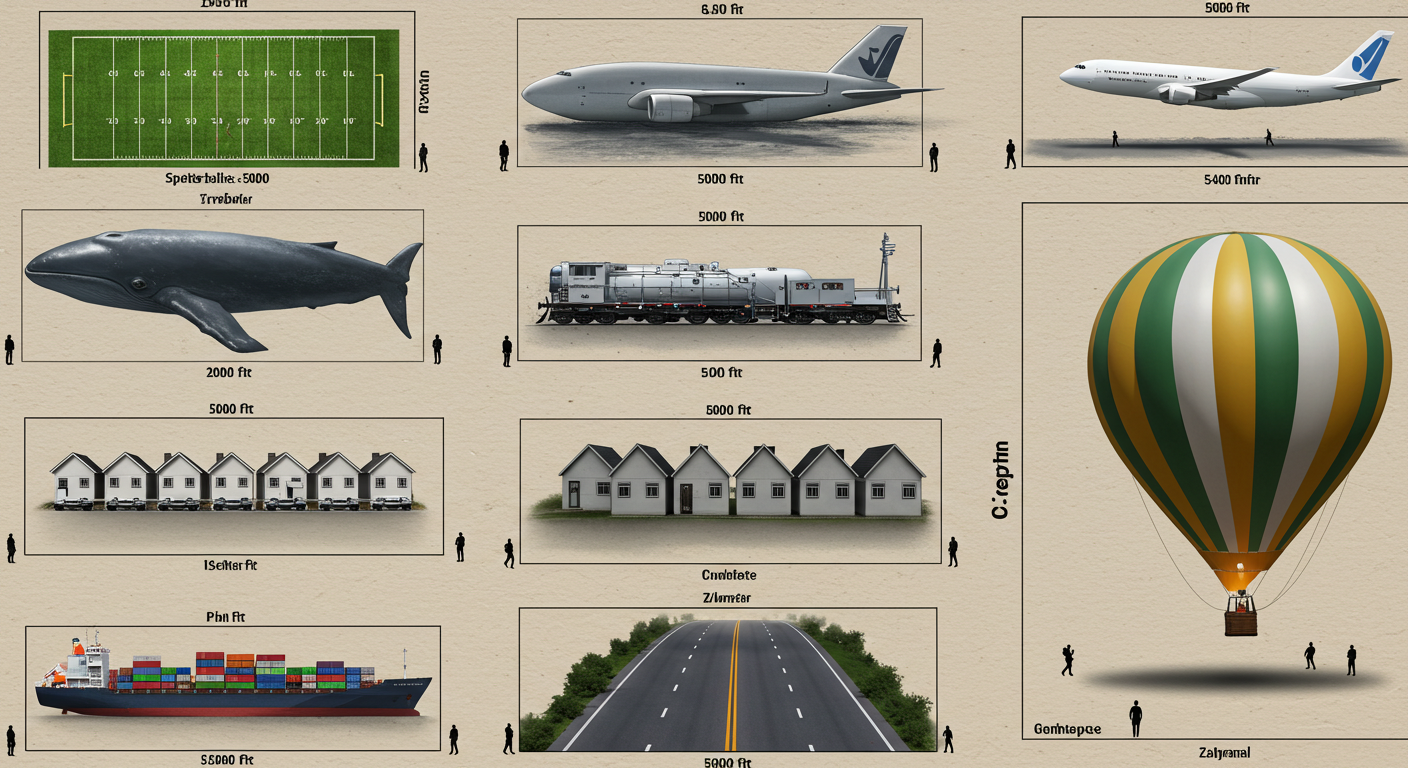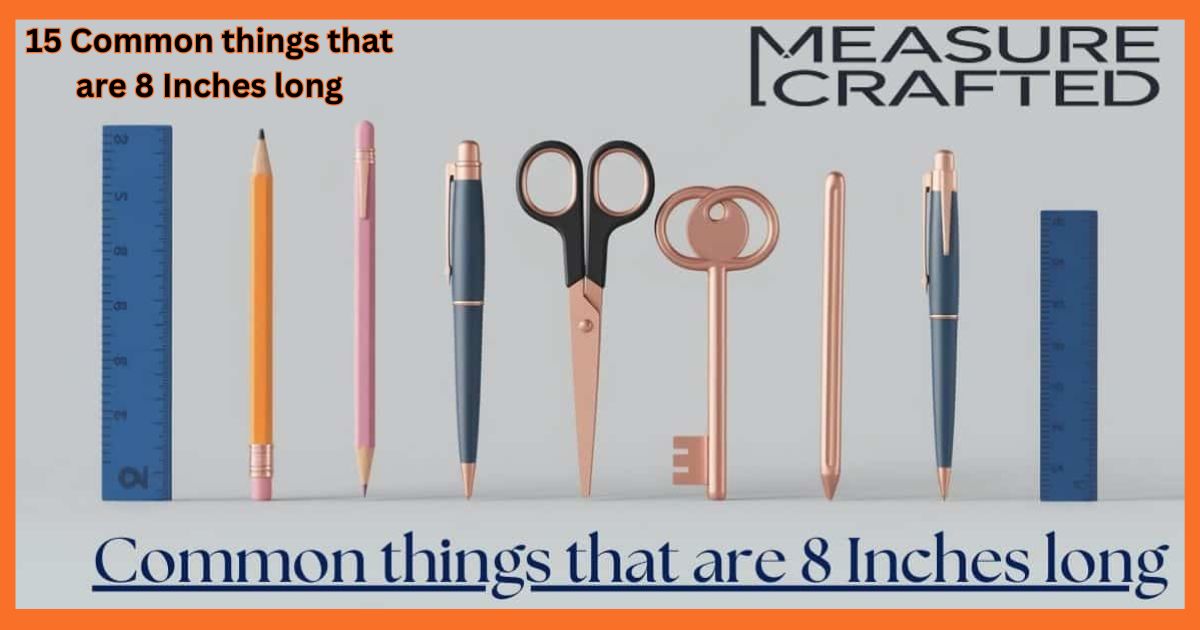Somewhere between a whisper and a yell sits the concept of 500 feet. Not quite a mile, not even close, but somehow… massive. It’s a length that’s difficult to wrap your head around until you try to feel it. Like when you’re standing at one end of a city block, looking across to the other, and realizing — “Hey… if I dropped nine Blue Whales end to end right here, I’d almost be halfway to the Eiffel Tower.” Weird, right? But also kind of wonderful.
We don’t usually feel distance unless it’s attached to something — a story, a law, a moment when headlights need dimming on a rural Texas road in the fog. This article’s your guide to wrapping your human brain around what 500 feet, or 152.4 meters, really means. Through the cities we walk, the ships we cruise, the whales we never see — this is a stroll through size, through scale, and through the things that stretch that far but rarely get noticed for it.
And yeah… don’t blink. Some of these might surprise you.
City Blocks & Street Lights – Where Urban Planning Gets Real
Ever walked through Portland, or Houston, or really any large-ish city in the United States, and thought, “How big is a city block, actually?” Turns out — roughly 260 feet long on average in U.S. cities, depending on the grid. So do a double-block stroll? Boom. 500 feet.
But here’s the weirdest bit. The average spacing between street lights? It’s about 30–50 meters apart. So if you’ve ever driven at night and counted 5 street lights, especially in a residential area — congrats, you’ve just traveled 500 feet without even realizing it.
- Picture it: a foggy street, your headlights cutting dimly through the air, and a quiet law in the background: “dim headlights within 500 feet of an oncoming vehicle.” The law’s not just for drama — it’s grounded in this invisible length that defines how far your actions reach someone else.
- Two city blocks = a walk short enough to be lazy about, but long enough to mean something when you’re hauling groceries uphill.
- Urban planners love this number — 500 feet is often used in zoning rules, setback distances, and yes, even restraining orders (more on that later, drama incoming).
The Titanic, Cruise Ships & Floating Cities That Dwarf Towns
Alright, buckle in. Or rather… board.
The RMS Titanic, in all its tragic glory, was around 883 feet long. So imagine slicing her right down to just over half, and you’re around that 500 feet sweet spot.
But modern cruise ships? Whole other level. The Harmony of the Seas, one of the largest cruise ships to ever bob across oceans, clocks in at a mind-numbing 1188 feet long. That’s over two times 500 feet, but hey — now we know. 500 feet is about 42% of Harmony, which is like saying, “This thing is half a floating metropolis.”
- Next time you see a cruise ship docked, visualize 500 feet of it — that’s usually around the length of the stern or the bow before it disappears into the haze of luxury and buffet tables.
- Maritime engineers use this measurement constantly — anchoring distances, radar proximity zones, and minimum spacing at busy ports.
- Even cargo ships are often measured in “container lengths,” and guess what? 10 shipping containers lined up = 500 feet. Practical magic.
Aircraft: The Sky Giants We Don’t Really Comprehend
Flying used to feel magical. Now it feels like the Wi-Fi won’t work and the guy behind you has no concept of what a headrest is. Still, the planes themselves? Monsters.
- A Boeing 747-300 is around 242 feet long. So line up two of those nose-to-tail, and you’re looking at — yep — just under 500 feet.
- It’s not uncommon for runway markings, taxiway separations, and emergency response zones at airports to be defined by that same mystical length.
- Next time you’re looking out the window and seeing two 747s lined up for takeoff, picture the invisible tape measure that would stretch 500 feet, whispering, “We built this sky with rulers and hope.”
Whales, Wildlife & The Gentle Leviathans Below
You ever get real quiet and think about blue whales? Like, really think about ‘em? They’re the largest animals to ever exist on Earth. One whale, one blue, one ancient breath — spans over 100 feet.
So, do the math. Five blue whales end to end, flukes and snouts in line, would be just around 500 feet. Think about that next time you’re at the beach.
- The ocean hides its giants, but 500 feet is not even a blip for deep-sea migrations.
- Even marine researchers often estimate sonar pings and GPS-tagged animal distances in 500-foot increments. It’s a handy chunk.
- There’s something humbling about knowing an animal exists that could be multiplied by five to create the size of a 50 story building lying down.
Restraining Orders & Headlight Laws – The Strange Legal Power of 500 Feet
Now here’s where things get weird — and a lil’ uncomfortable. Because 500 feet also shows up in our legal system. Not as a curiosity, but as a boundary.
- Most restraining orders across various states in the U.S. set the minimum required distance to 500 feet between the restrained and the protected.
- This isn’t arbitrary. It’s a safe bubble. A calculated comfort zone.
- In driving, laws require dimming your high beams within 500 feet of an oncoming vehicle. It’s both a safety rule and a moment of human courtesy. A way of saying: “I see you. I’ll ease off the brightness.”
Who knew distance could carry so much emotion?
Football Fields, Story Buildings & Other Tall Lies We Tell
Let’s clear something up right now. A football field (NFL-standard) is 360 feet, not 500. But add the two end zones and you get roughly 100 yards, or 300 feet. Still not quite.
- You’d need about 1.4 football fields to reach 500 feet.
- Or think vertical: a 50 story building typically stacks up to around 500–550 feet tall, depending on the architecture.
- Next time someone says “it’s just a football field away,” look them dead in the eyes and say, “You mean 1.4 fields? Be accurate.”
Planes, Trains & Trucking Distances That Keep the World Turning
Semi-trucks, when hauling full-length trailers, come in at about 72 feet long. So imagine 7 trucks, bumper to bumper on the highway, and you’ve got your 500-foot convoy.
- Cargo trains? Freight car = ~50 feet. So that’s 10 train cars to hit that mark.
- Ever been stopped at a crossing and counted the cars? Boom. You’ve visualized 500 feet without even trying.
Transport industries live and breathe this measurement — from logistics planning to safe stopping distances.
The Eiffel Tower & Other Tall Orders
The Eiffel Tower in Paris stands at a glorious 1063 feet tall. So, in that iconic spire, 500 feet would be just under halfway up.
- Next time you see a picture of the Eiffel, trace your finger to the midpoint and whisper “500 feet,” like some kind of nerdy wizard.
- You’d also need 2 Boeing 777-300s or a mashup of skyscrapers and whales to hit that height. Beautiful nonsense, isn’t it?
Distance, Imagination & Why This All Even Matters
So… why does knowing the length of 500 feet even matter? Why should you care that it’s the same as 6000 inches, or 152.4 meters, or that it fits into urban zoning, aviation law, and deep-sea biology?
Because we live in a world where numbers fly past us daily — news reports, building codes, rental agreements — and we nod, not knowing what they feel like. But when you start to visualize 500 feet, suddenly things aren’t just numbers.
They’re:
- The distance between you and someone you love… or someone the court says you shouldn’t love anymore.
- The length of a secret cruise ship deck where two retirees fall in love at sunset.
- The breath of five whales swimming under a moonless ocean.
How to Visualize & Use This Info in Daily Life
Here’s a few fun takeaways:
- Writers: Use it in your fiction — make a character walk 500 feet to meet fate. Feels more cinematic already.
- Teachers: Compare 500 feet with relatable things — trains, whales, cruise ships — your students will never forget it.
- Travelers: Next time you’re in Paris, estimate 500 feet up the Eiffel Tower, and take a breath right there. That’s where the air changes.
- Drivers: Keep that 500 feet dimming law in mind. It’s more than legal — it’s human.
Let’s Wrap It Up, But Never Tie It Down
So now, when someone says “it’s about 500 feet,” you won’t just hear a number.
You’ll see the shadow of a Titanic, the glow of 5 street lights, the ghost of a blue whale, the length of 10 shipping containers, or the safe space demanded by a restraining order.
You’ll feel it.
And maybe, just maybe, you’ll smile like someone who knows a weirdly specific thing the rest of the world forgot to care about.
Got a favorite way to visualize 500 feet? Maybe it’s your uncle’s ridiculous backyard or the distance from your house to that one bodega with the good snacks. Drop it in the comments. Let’s stretch this distance into something human.
Frequently Asked Questions
how far is 500 feet visually
500 feet is roughly the length of one and a half football fields or about the height of a 50-story building, giving a clear visual sense of distance.
500 feet visualized
You can visualize 500 feet as the combined length of ten standard shipping containers or about two city blocks in many U.S. cities.
how big is 500 feet
500 feet is quite large—it’s about half the length of a cruise ship or the height of half the Eiffel Tower.
things that are 500 feet long
Common things that are about 500 feet long include five blue whales lined up, two Boeing 777-300 airplanes end-to-end, and around five street lights spaced apart.
what does 500 feet look like
500 feet looks like a long stretch equal to one and a half football fields, or a row of ten 50-foot shipping containers lined up in a row.

Rober max seo expert



